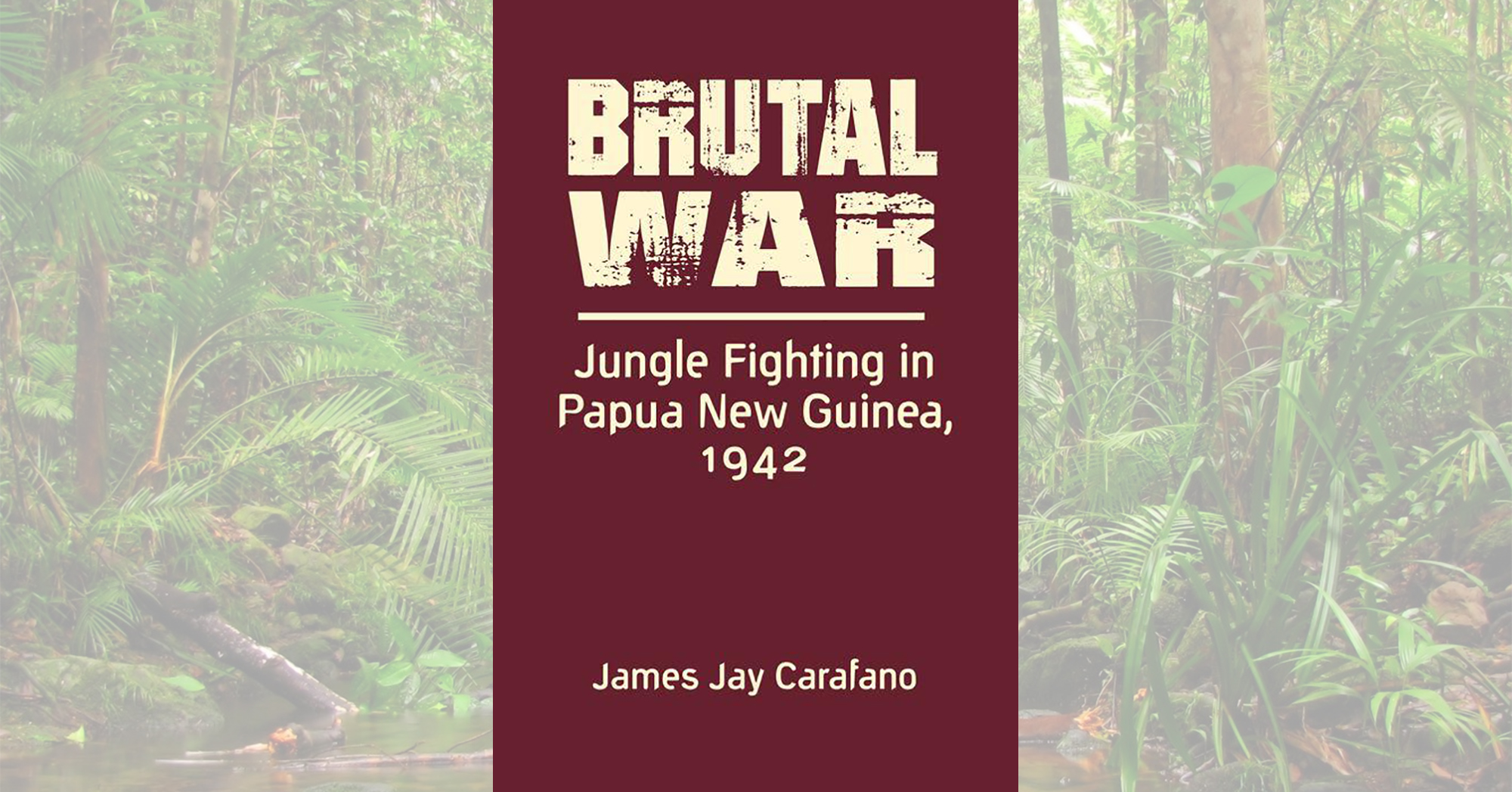Brutal War: Jungle Fighting in Papua New Guinea, 1942, by James Jay Carafano, Lynne Rienner Publishers, Boulder, Colo., 2021, $55
Military history is rife with battles, campaigns and wars that have left posterity asking how someone could have launched them with seemingly so little understanding of the potential consequences. According to Brutal War author James Jay Carafano, the World War II battleground of Papua New Guinea may be unique in that the combatants truly had no idea what they were getting into—not the Japanese, who hoped to neutralize Australia as a threat by seizing Port Moresby; not the Australians, few of whom had ever been on the island; not the Americans, who arrived to aid their Aussie allies and spearhead the counterattack; not even the indigenous population, whose “world” seldom extended beyond a handful of neighboring villages.
Less familiar to Americans than the parallel struggle for Guadalcanal in the adjacent Solomon Islands, New Guinea had little beyond its seaports other than muddy, disease-wracked jungle trails like the Kokoda Track. Even if one side or the other could deliver weapons, food and other supplies to their respective coastal bases, they still faced the extreme challenge of transporting those necessities to frontline troops. In consequence, the more one army or the other advanced along the trails, the more stretched its logistic lifeline became. Compelled to make do with whatever they had, soldiers of both sides waged a savage, point-blank ordeal for control of a vast, inhospitable island, the outcome of which was ultimately determined by which side was able to prevail in the logistics war.
Although Carafano is repetitive at points, Brutal War makes effective use of his research into the grim truth behind both sides’ propaganda regarding the horrific battles for such way stations as Kokoda, Giruwa, Buna and Gona. He explains the on-the-spot logic—right or wrong—behind the senior officers’ decisions and spends equal time at the enlisted level, with enough survivors’ accounts from all quarters to immerse the reader in the mud alongside soldiers for whom malaria and starvation were a more prevalent threat than bullets. For World War II scholars already perhaps too familiar with Guadalcanal, Brutal War should provide a new and necessary perspective on a contemporaneous turning point.
—Jon Guttman
This post contains affiliate links. If you buy something through our site, we might earn a commission.





